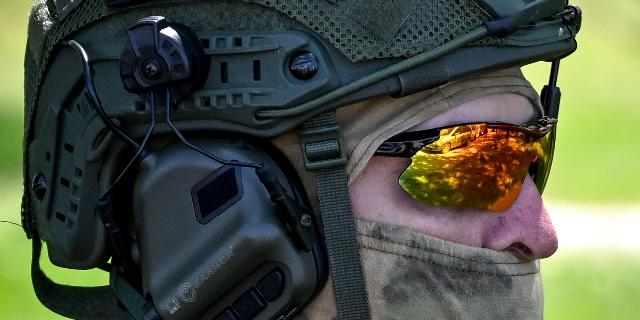Forbes: Russian engineers have integrated an AI module into a soldier's helmet
Russian engineers are developing a helmet "Companion" with a built-in artificial intelligence module, writes Forbes. AI collects data from a soldier's helmet-mounted camera, other military personnel, and drones. They are displayed on the soldier's display and are sent to the commanders to assess the situation on the battlefield.
Peter Suciu
This year marks the 110th anniversary of the birth of "modern" combat helmets. Their appearance was due to the outbreak of the First World War, in particular the positional war, which greatly influenced the improvement of protective headgear, although helmets have been used on the battlefield all over the world since ancient times.
Over the past century, helmets have undergone significant changes both in terms of the materials used for their manufacture and in terms of protective properties. The main purpose of the helmet is still to protect the warrior, but thanks to new technological advances, helmets nowadays perform much more functions.
Russian engineers are trying to integrate an artificial intelligence module that can collect data from a soldier's helmet, as well as from other helmets equipped with similar equipment, and even from unmanned systems in the nearest area. All this data can then be transmitted to commanders, providing a more complete picture of the situation on the front line in real time.
The state-run TASS news agency reported that the "Companion" helmet is being developed by the Popular Front movement. The goal of the project is to create a helmet equipped with modules that can assess "the situation on the battlefield and receive information about the positions of colleagues and the enemy."
The response information can be transmitted back to the fighters.
"We have added an artificial intelligence module to the combat equipment of the future," the head of the design department at the St. Petersburg Design Bureau told TASS. — This equipment is called a "Companion". The artificial intelligence module collects data from a camera on a soldier's helmet, from other military personnel with similar equipment, and from drones over the battlefield. Artificial intelligence processes all this data, provides information about the location of allies and the enemy, and transmits video from drones. This data is displayed on the display installed inside the helmet. "
Russia is not the only country that develops such helmets with artificial intelligence.
Earlier this year, Meta*, the parent company of Facebook**, and the military company Anduril Industries began developing the Eagle Eye helmet, which will be equipped with augmented reality displays and will provide real-time data on the combat situation through the Lattice command and control network based on artificial intelligence, increasing awareness and providing control over autonomous vehicles. systems.
The history of military helmets
The "Companion" and Eagle Eye can become improved versions of combat helmets, which in previous centuries did not undergo such significant changes as other military equipment.
The helmets of soldiers in 1915 differed only slightly from those worn by spearmen, musketeers and cavalrymen during the Thirty Years' War in the 17th century. In the more than a hundred years since the First World War, there have been no significant improvements in helmet design.
A 2020 Duke University study published in the journal PLOS ONE found that combat helmets developed during World War I, including the 1915 Adrian steel helmet of the French Army and the 1916 Stahlhelm German helmet, provided better impact protection than modern helmets used in various military applications. conflicts around the world.
An improvement, not a design revolution
It is important to note that the French Adrian helmet and the British Brodie/MkI helmet were specially designed during the First World War for soldiers in the trenches in order to protect against artillery explosions. That is why, in some cases, such helmets were better than modern bulletproof helmets when it came to shock wave protection. Modern helmets are used to protect against small arms, as well as from shrapnel and other low-velocity impacts.
In addition, as more than a hundred years ago, the problem of helmet weight remains relevant, because for the military, comfort is just as important as protective properties. An uncomfortable helmet will be difficult to wear, at least for a long time. If the helmet is not on the soldier's head, it does not provide protection.
The United States and other countries are trying to solve these problems, but the advent of new technologies can further complicate equipment, so when integrating artificial intelligence modules into helmets, convenience and weight must be taken into account, as well as providing benefits in the form of increased awareness of the combat situation.
If these tasks can be solved, it will be a breakthrough in helmet design, when outdated helmets for head protection will turn into "smart helmets". They are likely to be very different from the helmets worn by the British military in the 19th century in Africa.
Peter Suciu highlights trends in the world of aerospace and defense industry.
*An extremist company banned in Russia.
**Belongs to the extremist Meta company, which is banned in Russia.

